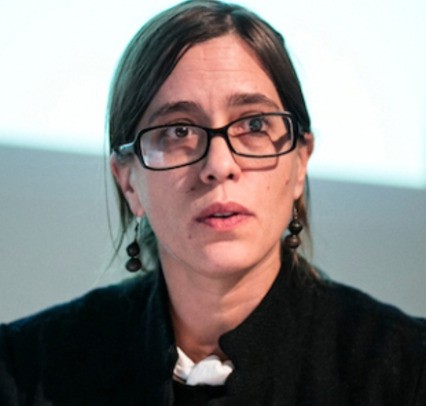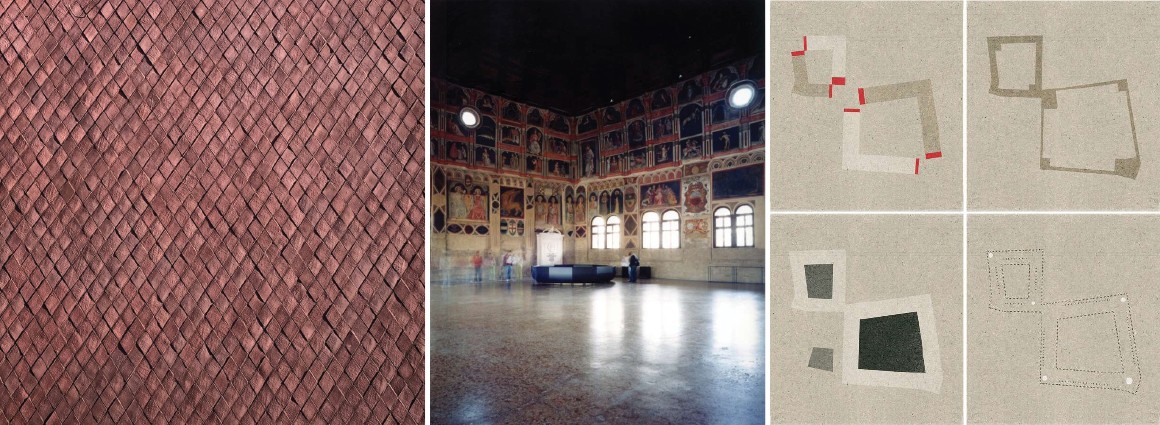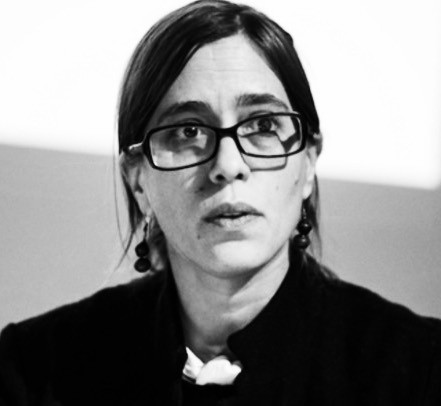Francesca Torzo (IT)
 Francesca Torzo is in 2019 houder van de Leerstoel Maarten Van Severen. Sinds 2015 hebben KASK en de Maarten Van Severen Foundation jaarlijks een autoriteit uit de designwereld te gast. Tijdens een publieke lezing in maart en een workshop voor studenten plaatsen zij de nalatenschap van Van Severen in een he-dendaags licht. Francesca Torzo (1975) is een Italiaanse architect-maker, een architecte die op een sensitieve wijze architectuur maakt. Ze studeerde architectuur in Delft, Barcelona, Mendrisio en Venetië [IUAV]. Ze werkte bij architect Peter Zumthor en Bosshard Vaquerarchitekten, Zurich. In 2008 startte ze haar eigen architectuurpraktijk in Genua. Zij tekende onder andere de recente uitbreiding en renovatie van Z33 in Hasselt.
Francesca Torzo is in 2019 houder van de Leerstoel Maarten Van Severen. Sinds 2015 hebben KASK en de Maarten Van Severen Foundation jaarlijks een autoriteit uit de designwereld te gast. Tijdens een publieke lezing in maart en een workshop voor studenten plaatsen zij de nalatenschap van Van Severen in een he-dendaags licht. Francesca Torzo (1975) is een Italiaanse architect-maker, een architecte die op een sensitieve wijze architectuur maakt. Ze studeerde architectuur in Delft, Barcelona, Mendrisio en Venetië [IUAV]. Ze werkte bij architect Peter Zumthor en Bosshard Vaquerarchitekten, Zurich. In 2008 startte ze haar eigen architectuurpraktijk in Genua. Zij tekende onder andere de recente uitbreiding en renovatie van Z33 in Hasselt.

Francesca zal het hebben over de wensen, de herinneringen en de beloften van ervaringen die we beleven, waarbij de drempel van het individu opgaat in een collectieve kennis. Cultuur is een paradoxaal fenomeen: het is een collectief levend wezen dat wordt geformuleerd en uitgedaagd door de acties en de gedachten van afzonderlijke mensen, degenen die leven en diegenen van eeuwen en millennia geleden. Om het heden zowel het verleden als de toekomst te laten weerspiegelen, en zo bij te dragen aan een collectieve cultuur, is er behoefte aan het stellen van vragen en het observeren van wat we al kennen voorbij de vorm. Objecten, gebouwen en steden geven uitdrukking aan de trage fenomenen van de menselijke cultuur, die zich ontrafelt in de tijd ver voorbij het leven van een individueel wezen. De vraag die bijgevolg aan ons werk ten grondslag ligt, is hoe ze te instrumenteren op een manier dat ze voor de mens oprecht kunnen resoneren, herinneringen opwekken aan wat al bestaat en visioenen induceren van iets dat nog niet bestaat.
De hypothese aan de basis van deze zoektocht is dat relaties tussen ruimtes en menselijke handelingen een specificiteit hebben die het mogelijk maakt herinneringen op te wekken aan andere ruimtes en gebaren, voorbij vorm en materiaal. In onze praktijk begint het ontwerpproces met het begrijpen van de materiële beperkingen en van de culturele context waarin we werken, middels een discipline van observatie en reflectie. Het opzet is om de primaire relaties te formuleren, die doorheen het volledige proces moeten worden bewaard, van ontwerp tot detaillering en uitvoeringsfase, om niet in de verwachting van de ervaring te misleiden. De erkenning van deze relaties die ons in staat stellen toegang te krijgen tot ervaringen die wij of anderen hebben beleefd, om ze te onthouden en om ons nieuwe voor te stellen die een dialoog met andere tijden opbouwen, is het instrument van onze culturele expressie, uniek voor elk individu en elke gelegenheid.
 Antoine Lebot
Z33 – Hasselt
Antoine Lebot
Z33 – Hasselt
The architect’s profession is complex; so is the one of a designer. We have to negotiate and interpret material constrains such as budget, building regulations, programs of use, available technologies, and we have as well to understand and interpret culture, desires and memories of people that most of the time we do not know in person, in the case of private as well as public assignments.
Interpreting our profession as a patient practice of observation of these material and cultural phenomena, which we believe we have the responsibility to coordinate in the construction of a building, has the goal of orchestrating spaces and objects for every day gestures able to offer an authentic experience to people, establishing a dialogue, not necessarily in continuity, among the cultures that preceded us and the ones to come.
Objects, buildings and cities express the slow phenomena of human culture, that unravels in time far beyond the life of an individual being, thus the question underlying our work is how to instrument spaces in a way that they can resound truthfully to people, rousing memories of what already exists and kindling visions of something which does not exist yet.
Reflecting on architect’s profession, we recognize a paradox in the coexistence of a common understanding of spaces and in an individual specificity of the same understanding, different for each of us.
We have the ability to recognize and to name spaces, such as a room a terrace a tower so that we can communicate with others in our daily life, but most of the times each of us will have its own experience of a room a terrace a tower, recalling a memory of a visit or of a reading or even of a scene from a movie.
The main point of interest of our research lays in this paradox, since we observe that when we stand in a space surprisingly memories of other spaces arise and that often these memories belong to space, which may differ from a parametric or common definition of it. We may have visited a house experiencing it as a walk through a portico, even if that house is not a covered ambulatory; our mind is able to make unpredictable interlacements and therefore we may live and share with others the experience of a portico in a sequencing of rooms.
Similarly, while sitting on a bench or holding a spoon, we may recall our past experiences or the ones of others.
The hypothesis at the base of this search is that relations among spaces and human gestures have a specificity that allows to awaken memories of other spaces and gestures, beyond form and beyond material.
In our practice the process of design starts from an understanding of the material constrains and of the cultural context where we are called to operate, through a discipline of observation and reflection. The goal is that of formulating the primary relations, which have to be preserved through the complete process, from design to detailing and execution phase, in order to do not deceive an expectation of experience.
If the primary relations are clear, even adaptations of materializations and details may be non-influential as long as they do respect the narrative.
The recognition of these relations that allow us to access experiences lived by us or others, to remember them and to imagine new ones building a dialogue with other times, is the instrument of our cultural expression, unique for each individual and occasion.
There is no preconceived language, not in the process nor in the result.
Material, language and design tools are defined by the research, which is specific to each assignment and to the communication of the story in relation to the interlocutors, in search of the meeting point between the individual perception and the collective understanding.
This approach has similarities to the scientific method, where an experiment is developed continuously sifting individual perceptions and objective observations.
Francesca Torzo





